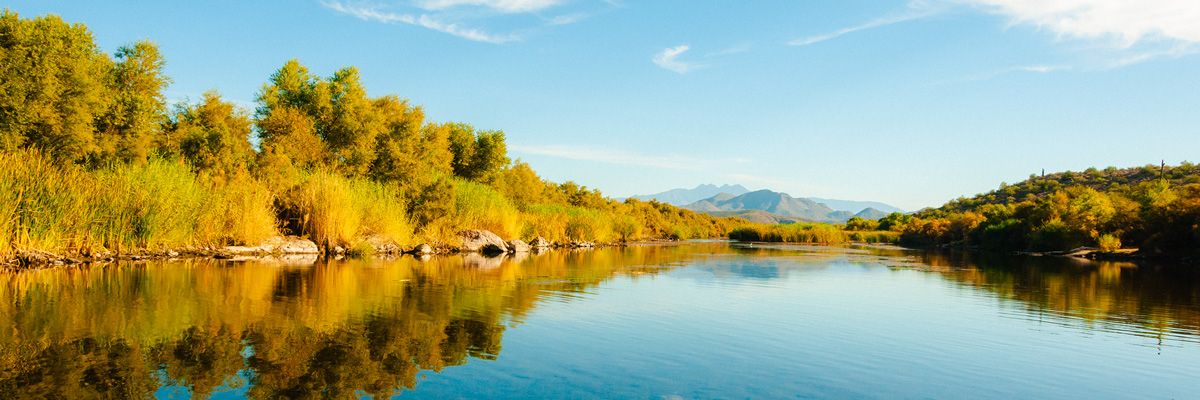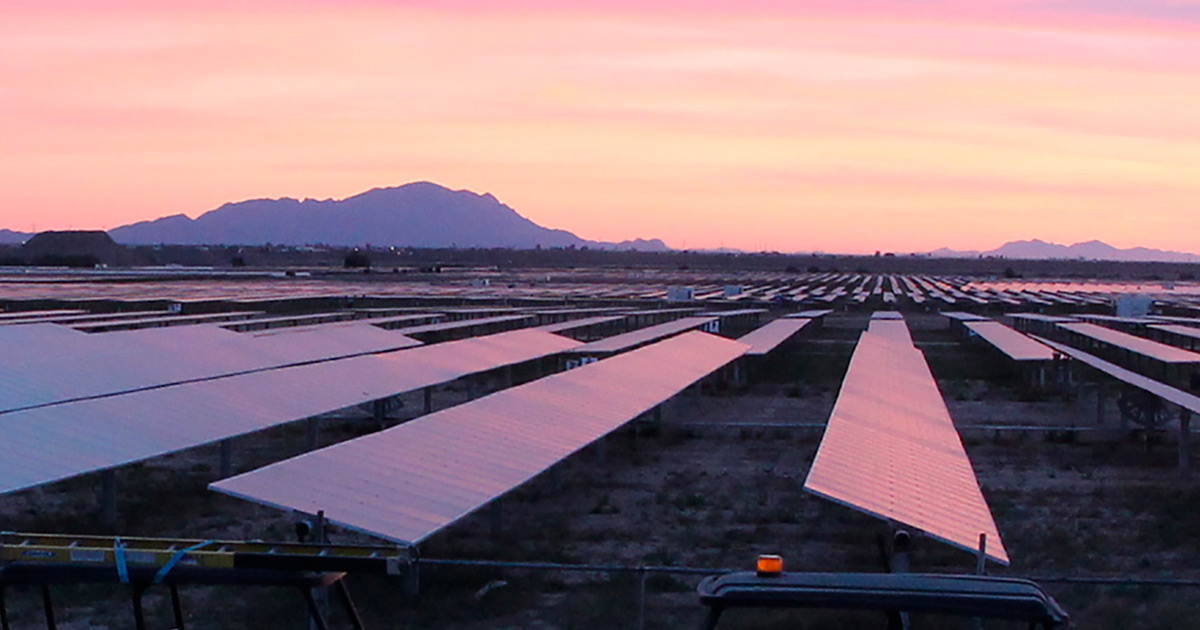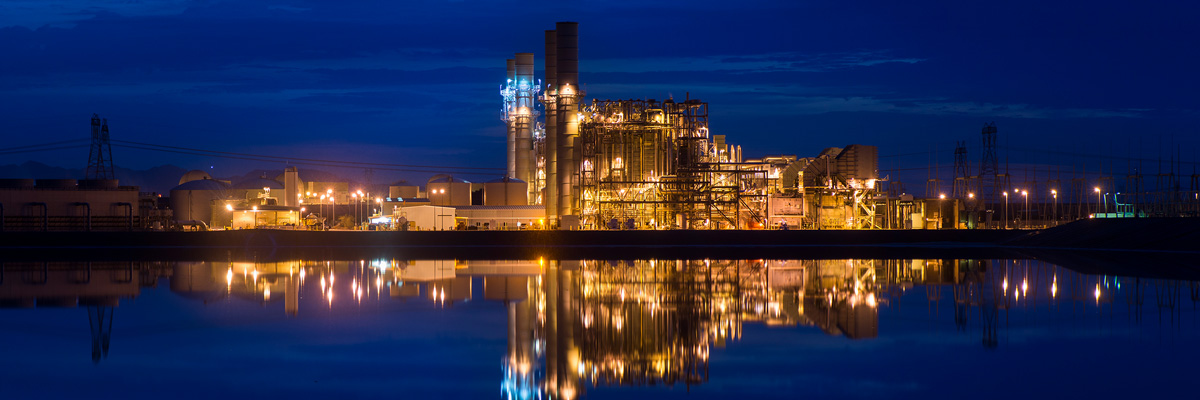
Our environmental policies and programs
Resource conservation is at the core of SRP’s mission. See the ways we’re protecting and preserving precious natural and cultural resources while meeting the needs of our customers.
On this page:
We have a deeply rooted culture of environmental regulatory compliance. That’s why we have extensive compliance programs and policies, and regularly perform audits and in-depth self-evaluations of our facilities and operations to ensure we’re adhering to them.
Taking action on climate change
As a community-based leader, SRP is committed to helping our customers achieve their clean energy goals and reduce the risks of climate change on Arizona communities and our region.
Want to see our progress? Take a look at our greenhouse gas emissions in recent years.
Today, given the growing risks associated with the changing climate, SRP will significantly and steadily reduce greenhouse gas emissions while maintaining a reliable, affordable and sustainable supply of power and water.
In fact, we plan to reduce the amount of CO2 emitted per megawatt-hour (MWh) by 82% from 2005 levels by 2035 and to reach net zero carbon emissions by 2050. It’s all part of our goals to reduce carbon emissions, evolve the grid and improve water resiliency.
Protecting the air we breathe
SRP's air quality compliance strategy focuses on finding technically sound and environmentally beneficial ways to meet the stringent emission requirements associated with power generation.
We’ve invested more than $1 billion in emissions controls, equipping our generating stations with a wide range of air pollution control equipment.
Since 1995, those controls have reduced sulfur dioxide and nitrogen oxide emissions intensity by 80%.
Here are the steps we’ve taken to improve air quality in Phoenix:
- Invested more than $500 million to upgrade air pollution equipment at Coronado Generating Station.
- Reduced the use of mechanical parts cleaning products that generate hazardous waste and have the potential to release toxic air emissions.
- Decreased fugitive dust emissions during construction and maintenance activities in the Phoenix metropolitan area.
- Controlled many of our gas units for nitrogen oxides and carbon monoxide. (Clean-burning natural gas is the primary fuel in these units and low-sulfur fuel oil is available for emergency operating situations.)
Protecting and conserving wildlife
As responsible stewards of Arizona’s natural resources, SRP engages in efforts to protect wildlife and conserve wildlife habitats.
In addition to meeting regulatory requirements, SRP understands the importance of protecting Arizona’s native plants and wildlife, especially sensitive and at-risk species.
To broaden our impact, we work cooperatively with state and federal agencies. We provide funding to:
- Tonto National Forest for a Forest Protection Officer to patrol and protect habitat at Roosevelt Lake.
- Arizona Game and Fish Department (AGFD) for bald eagle nest watchers and nest surveys.
- AGFD for operation and upgrades at Bubbling Ponds Fish Hatchery and native fish stocking activities.
- Bureau of Reclamation to construct a fish barrier on Lime Creek, a tributary to Horseshoe Reservoir, to protect a population of Gila topminnow, a native fish species.
Avian protection programs
To protect birds that may come into contact with our infrastructure, we use a variety of protective devices, such as insulating covers, bird flight diverters and perches.
Want to help? If you find a sick, injured or orphaned animal in or around an SRP power facility, call (602) 236-2473(602) 236-2473.
We also work closely with other organizations that protect native wildlife, including the Arizona Game & Fish Department, U.S. Fish & Wildlife Service, Liberty Wildlife Rehabilitation Foundation
and the Electric Power Research Institute to develop and research new avian protection methods.
Additionally, SRP is a member of the Avian Power Line Interaction Committee, which works with utilities, agencies and the public to protect birds without interrupting the delivery of electricity.
Southwestern Bald Eagle Management Committee
Another aspect of SRP's commitment to preserving wildlife is our involvement in the Southwestern Bald Eagle Management Committee.
The Southwestern Bald Eagle Management Committee is made up of state, federal, tribal and private organizations that work together on the long-term conservation of bald eagles in Arizona.
Since the southwestern bald eagle nests in and around the state's rivers and reservoirs, SRP is involved in ensuring these majestic raptors are protected and can flourish in their habitats.
Habitat conservation programs
To offset the impacts of dam and reservoir operations on threatened, endangered and at-risk species, SRP developed two habitat conservation plans (HCPs).
In these HCPs, SRP made long-term commitments to implement conservation efforts for the following species:
- Southwestern willow flycatcher
- Western yellow-billed cuckoo
- Bald eagle
- Ridgway’s rail
- Northern Mexican gartersnake
- Narrow-headed gartersnake
- Lowland leopard frog
- 10 native fish species
SRP’s cultural resources program
SRP places great importance on the preservation of cultural resources at our facilities. When impacts to cultural resources can’t be avoided, our Cultural Resources Program works with Native American, federal, state and municipal partners to make sure the proper rules and scientific standards for recovery, analysis and curation are followed.
We often go above and beyond these regulatory requirements as SRP believes it is our ethical obligation to preserve our valued heritage and cultural resources. Because of this, SRP is committed to promoting community education about archaeology, history and cultural resources. Some of our efforts include funding of cultural resources events, education programs, classroom visits, public lectures and informative signs along our canal paths. Learn more about SRP’s history.
Historic places
Many of SRP’s facilities are listed in the National Register of Historic Places, including:
- The Salt River Project Diversion and Conveyance System Historic District, which includes the Arizona, Crosscut, Grand, South, Consolidated, Eastern, Tempe, Western and Highline canals, the Granite Reef Diversion Dam and the Crosscut Hydroelectric Plant
- Bartlett, Horse Mesa, Horseshoe, Mormon Flat and Stewart Mountain dams
- Theodore Roosevelt Dam, which is not listed in the National Register, is designated by the International Commission on Irrigation and Drainage
as a World Heritage Irrigation Structure.
Archeological sites
In order to protect fragile archaeological remains, the locations of archaeological sites are not disclosed in compliance with federal and state law and in accordance with SRP Policy (36 CFR 296.18, ARS § 39-125, SRP Policy 8-70-1).


